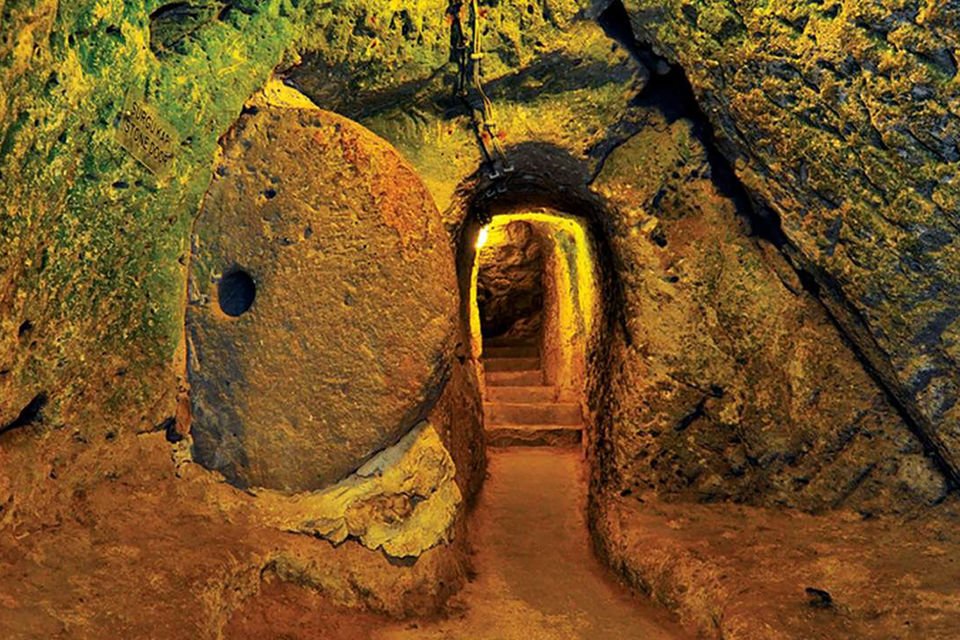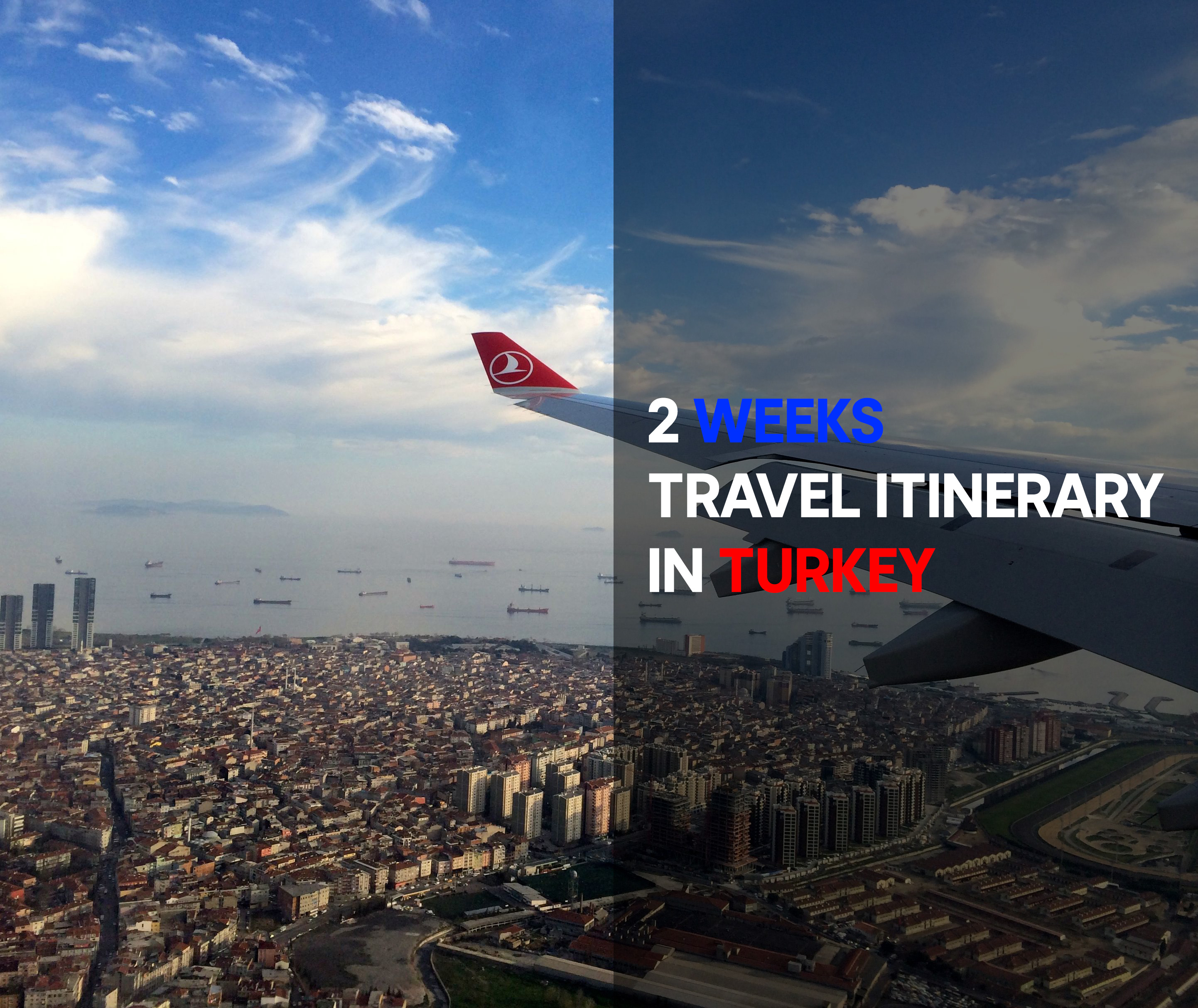
Derinkuyu Underground City is a very specific, building-urban concept that is tied to the extraction of tuff rock building materials. These pyroclastic material ejected volcano in contact with Anatolian and Arabian tectonic plates. For the construction of the Derinkuyu Underground City were used exceptional boundary conditions. It is a fact that we have easily extractable building material which is self-supporting, and he does not need additionally reinforced. It means that these soft and stable rocks allowed the creation of large cavern system with a complete infrastructure that needed this underground city. It was placed in it both the living area and warehouse, educational, religious, wells, ventilation systems or stables for animals. There were in the in Cappadocia region up to 36 underground cities. The exact number depends on the classification criteria that were used.

Derinkuyu is an excellent example of the historic town, built in the subsoil in central Anatolia. Its spatial range is incredible he had a capacity for up to 20 thousand inhabitants. The entire underground system has up to 18 floors while the depth of the deepest floor is up to 85 m. This historical underground city was discovered relatively recently in 1963 when the reconstruction of either house was made. It was opened to visitors in 1969. Underground spaces were used until the 19th century and then forgot about them. Time of origin is not precisely dated. It is only known that it was used in past centuries. There are many theories. Many authors date its origin to the period of the Hittites. Constructional attraction is that the Derinkuyu Undergound City has only one main entrance which is also protected by a large circular stone with retractable system. It means that his defence has been very effective because defending a narrow hole was relatively well realized. Openings having larger area would be substantially less protected.

If we think about the development of architecture in the future so it is evident, the demographics in the future will increase the need for building underground cities that will become part of the city lying on the surface. This is already the current state because most of the world's cities have an extensive system of underground structures. Requirements in time will increase further. This presents greater demands infrastructural, environmental, capacitive, and more. It will use a series of underground technology in underground cities, and many of them will become more urbanized. Utilization of Derinkuyu Underground City is still a hot topic because of the increasing occupation of the surface areas.

In the Derinkuyu Underground City there is a huge amount of different objects. According to both their size and depending on the purpose. In terms of size there is quite tiny caverns in which they were placed the tomb. While there is a huge cavern where it was school or a religious place of social gathering rooms, bedrooms, kitchens, bathrooms, stables for animals, water tanks, caverns collecting for water wells, food storage, wine, separate tombs and burial place, weapons depot.
But there are also quite specific objects that we do not find in underground cities built on the surface. That's objects are ventilation shafts, connecting tunnels etc. It is obvious that Derinkuyu is among the largest underground cities in the world. It also represents the greatest concentration of underground cities in the world. The individual floors were mutually interconnected opening doors. Stone circular door can be opened only from the inside for security reasons. Underground cities in Cappadocia also dealt.
Concept of the Derinkuyu Underground City was very well developed relative to its age. The most important system of the town existence is to create a self-propelled air conditioning. There were discovered more than 50 ventilation shafts. They were designed to allow air to circulate by itself. The whole system was designed so that all of the lowest and the most remote parts are sufficiently ventilated to ensure the necessities of life.
In the Kaymakli there is situated another large underground city. It has been discovered recently and its underground range is even greater. Simultaneously these underground cities were connected to each other; the distance between them is 9 km away. Cities can be connected with other underground cities. It is assumed but not proven. From the viewpoint of public supply of food, it has been shown that there were animals, especially cattle. It is a mystery how it was obtained a feed for cattle. It is clear that animals receive food from the surface. However, it must be dangerous for the safety of the underground city.
The basic boundary condition of building underground cities was conditions of safety. It obviously varies with the military and technological capabilities of various civilizations in the historical period. It means that in the past people were hiding from the raids horses and infantry armies. Currently, underground safety protection is aimed against nuclear and other bombing attacks. Only subsequently, it is aimed against the attacks of the two opposing parties. The primary advantage is obtained at the beginning. People can hide before the enemy while they are not easily accessible to them. Safety underground cities are not fully secured. During the unveiling of potential enemies also occur certain security risks that other buildings do not have to deal with. These include the possibility of flooding of underground space, gas attack etc., security problem with the ventilation system (fume or other gas contamination). There is also the issue of starving the population and so on.
Another reason for construction of underground cities is the need to reduce the occupation of surfaces. With increasing pressure on the occupation of surfaces, there is a greater need for construction of underground cities. But building of the underground city does not automatically mean that these underground cities will no longer be a need for annexation of surfaces. There is a rule that the bigger, more extensive and deeper underground city, the greater the pressure on the occupation of surfaces. It is evident every underground city needs some kind of service on the surface.
The third reason is the need to reduce the energy demand for heating. Given the climatic zones of the planet earth, there is a structured energy need for heating or cooling the living space of people. The greater the difference between day and night temperature demands for heating are higher. In the climate zones with lower temperatures in the winter, this requirement is automatically higher. Underground space provides us a relatively constant climate environment during the year. The whole process leads to a reduction in energy intensity living space. In the underground cities we can better realize low energy buildings. Location of structures beneath the surface is better insulates from the surface temperatures. Fourth grounds are to reduce the noise pollution of cities. It is obvious that the city due to the number of machines and other mechanical devices generate high noise levels. This is a significant problem of big cities. They reduce the noise problem for cities by placing a series of noise-intensive facilities to underground and also the spatial separation places of the operations from each other. The existence of underground cities used in the education system, in terms of underground construction and many other sectors.
The fifth reason is the reduction of the dust load cities. For surface-located cities should be placed demanding operations to dust in the underground. Direction and control of air flows is technically more manageable.
The sixth reason involves reducing the environmental burden on cities. The larger the space underground cities in the environment, there is a greater possibility of reduction of environmental burdens cities.
Another reason for the implementation of underground constructions is high demands on transport. The increasing population on the surface complicates transportation, which is becoming untenable. It then follows that we need locate these buildings into underground spaces.
The eighth reason includes the need to reduce time to move people into work and residence. This need in big cities is unable to resolve any way other than placing the infrastructure into underground spaces.
The ninth reason is the effort to preserve the existing historical, cultural and architectural values of cities. It is necessary to build a new part of the city into the underground if we want to preserve historical urban areas and at the same time in their life and work.
Powered by Froala Editor



